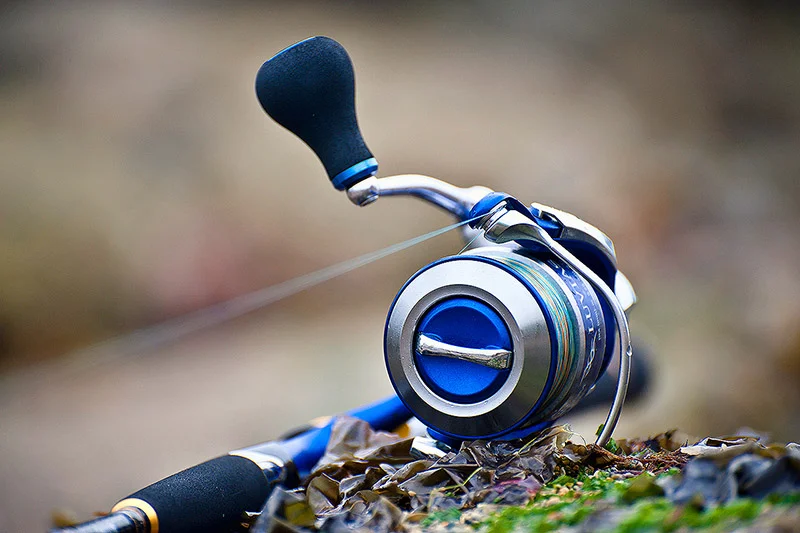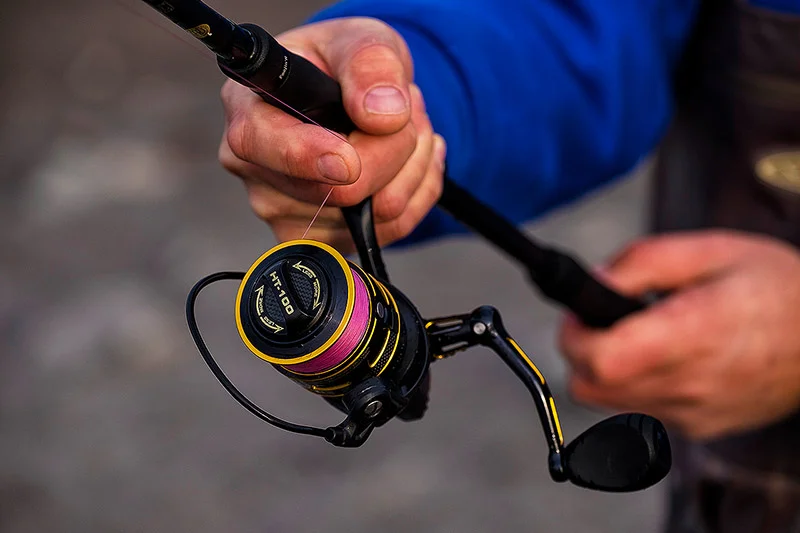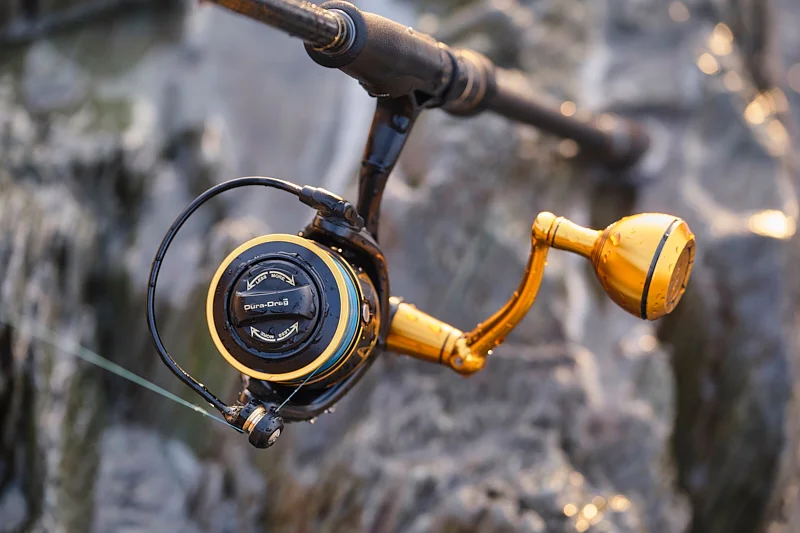What the hell do you think I was referring to? It’s disgusting to even think that the title of this fine blog post is a crude and somewhat immature attempt at a form of appendage related humour. Me? Never! I am a middle aged man who prides himself on being less mature than his 12 and 14 year old girls if that is any help, but as intelligent and grownup my blog title may well be, I am in fact referring to soft and hard reel knobs. Tee hee…………

And I do like a good handle/knob on my spinning reels. I don’t know which company it was who started to introduce the EVA foam type knobs on their spinning reels, but from memory I reckon it would have been the old blue coloured Daiwa Luvias 3000 where I first got to fish with a spinning reel that didn’t have a harder rubber or plastic knob - and I loved it, indeed I still reckon that chunkier, rounder type of softer knob on the old Luvias was about as good as a reel handle gets.
But of course we fish with a certain spinning reel for a while and we get used to what type of knob it comes with. Some of you prefer something harder in your hands, and some prefer something softer (damn, damn, damn this is some subtle stuff), plus there’s a market for third-party reel components which I must admit I have never explored. Go looking around and you can find some weird and wonderful replacement knobs for a number of the more popular spinning reels.

One spinning reel knob I did really like from day one is the one you find on a Penn Clash 3000. I got the impression that it might be a bit of a marmite knob, but I seriously like it and how it feels when I’m fishing. It’s not as if we are needing to grasp onto our reel handles for dear life as a rampaging beast of a fish strips hundreds of yards of braid off and tries to reef us around a coral bommie, but when you’re lure fishing with a spinning reel you are of course holding onto the knob virtually all the time - so it’s nice to like your knob is it not?
Now you have most likely guessed from this blog that I have a serious thing for the awesome Penn Slammer III spinning reels, or at least the 3500 and 4500 versions that I know and have fished with a lot now. There is of course this Penn Spinfisher VI spinning reel competition running at the moment - hint hint, look here for all the details! - and I am really getting into these reels and also the knobs they have on them, but I can’t get away from how solid and incredibly confidence-inspiring the slightly more expensive Slammer III reels are.

Spot the big (gold) knob!
And I have never come across a spinning reel that comes with a couple of different knobs in the box like you find with these Slammers. I must admit that when I first lifted a brand new Penn Slammer III 3500 from its shiny black box, I did take one look at the big gold coloured knob which was on the reel and think no bloody way, it looks far too heavy and bulky and blingy for me - but it’s not. That gold coloured knob is in fact hollow and weighs virtually nothing. I took the reel out and fishing and in no time I am merrily gripping this hard, shony knob and cranking away like a demented dervish, to the point that I went and forgot that there was in fact another knob in the box that I hadn’t even tried yet.

Bearing in mind here that I have only seen the 3500 and 4500 size Slammer III reels so far and I have a feeling that the larger ones might have a round profile EVA knob in the box, but the spare EVA knob that comes with the two Slammers I know are in fact the same as you find on the Penn Clash spinning reels - and as I said I seriously like these handles or knobs or whatever I should be calling them. But I fished and fished with the gold coloured knobs and I really like them except perhaps when your hands are soaking wet and they become a little harder to grasp.

I then remembered about the EVA knobs that were sitting in my Slammer III 3500 and 4500 boxes, and the fact that I had not even tried these reels yet with alternative knobs on them. Now I am pretty frigging useless at DIY but even I managed to follow the simple instructions and change the knobs over on my reels - and I haven’t looked back. I’ll fish the Slammers either way if needs be, but for whatever reason that black EVA knob on these reels makes them feel even better again to me. Yep, it’s not as if these Shimano 4000 size Slammers have suddenly become smaller reels due to simply changing the knobs over, but for some reason I do think the EVA knobs on these chunky reels really work well. Do you prefer a hard or a softer knob? And may my two girls never see this blog post and how childish their dad really is…………….
Rather than me spend more time linking to my reviews of the various items of fishing tackle mentioned in this blog post, you can find them all here, linked to within the various tackle categories.

Disclosure - if you buy anything using links found in this blog post or around my website, I may make a commission. It doesn’t cost you any more to buy via these affiliate links - and please feel entirely free not to do so of course - but it will help me to continue producing content. Thank you.


































































